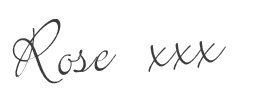Classic Quilt Blocks have been sewn for centuries, are easy to recognise and are every quilter's favorite. Let's celebrate these gorgeous blocks and add them to our quilting projects!
Welcome to Week Two of my Economy block Classic Quilt Blocks series. Hopefully you had some time to plan a few blocks using last week's colouring sheet because today we're going to sew an Economy block in my step by step tutorial.
There are a few ways to piece this block, and my preferred method is FPP because there's no math and it's accurate. However, today's tutorial is for a 6" (finished) Economy block using traditional piecing methods.
At the end of the tutorial I've provided a Cutting Chart of six different sized blocks for you to use for future projects, and I've also provided a few FPP templates if you decide to use this method.
For this tutorial we'll be cutting slightly larger triangles and trimming as we go. Take your time, follow the steps and tips, and remember to keep everything square along the way!
OK, lets get started:
From a print fabric cut:
- 1 x 3 1/2" square (A)
From background fabric cut:
- 2 x 3 1/2" squares cut diagonally to yield 4 triangles (B) - inner triangles
From a print fabric cut:
- 2 x 4 1/4" squares cut diagonally to yield 4 triangles (C) - outer triangles.
- Sew a background (B) triangle to two opposite sides of the print (A) square, along the long sides, pressing seams towards the triangles.
Tip: to centre the triangle on the square prior to sewing, fold the square and the triangle in half and make a small crease. Line up the creases, and pin and sew.
- Trim away the excess tails, using the print square edge as a guide to give you a straight sewing edge.
Tip: do not miss this step, it gives you a straight, flat sewing edge which helps with accuracy.
- Sew a background (B) triangle to the two remaining sides of the print (A) square, along the long sides, pressing seams towards the triangles.
- Carefully trim this unit to 4 3/4" square.
Tip: use the lines on your ruler and the points of the square to accurately trim and square this unit to 4 3/4" square.
- Sew a print (C) triangle to two opposite sides of the unit, along the long sides, and pressing seams towards the triangles.
Tip: find the centre of your triangles as before and pin. Flip the unit so it's on top and the background triangle is underneath - right sides together. When you sew, you can clearly see the intersecting seams of the square and you can sew 1/4" right across the tip of the point.
- Trim away the excess tails using the unit as a guide to create a straight sewing edge.
- Sew a print (C) triangle to the two remaining sides of the unit, along the long sides and pressing seams towards the triangles.
- Carefully trim your Economy block to 6 1/2" square, using the lines on your ruler and the intersecting seams to keep everything square and accurate.
And that's it! One perfect little square to begin your new obsession with Economy blocks. They are easy to sew but it's important to trim as you go, to keep everything square and accurate.
Because the math is hard, I've put together a Cutting Chart for six sizes of this block, and I've included the trimming sizes as well, to make it easy for you. You can use these blocks in any project or add them to other blocks, which I'll talk about next week.
Simply click on the link to download your free Cutting Chart or right click on the photo below and save it to your computer:
If you want to try piecing the Economy block using foundation paper piecing, I've also provided a few templates to get you started. Remember to follow the printing instructions included in the file, to ensure your templates print to the correct size.
Simply click the link to download the file:
And that's it for this week. I hope you had fun sewing with me!
Next week I'm going to show you how to use the Economy block as a building block in quilt design. I'll be combining it with some of the other Classic Quilt Blocks we've already looked at and a few other blocks to inspire you. It's going to be another fun week and I hope you join me!
Happy quilting :)





















Thank you Rose for all the info and the free cutting chart. I definitely want to make some of these blocks.
ReplyDeleteYou're welcome Joyce. I hope they are useful to you :)
DeleteThanks Rose for the tutorial, cutting charts and FPP templates. You've made it look easy and precise. Can't wait to give your methods a try.
ReplyDeleteI hope they're helpful. I hate wonky blocks and I've had far more success sewing them this way :) Good luck!
Delete